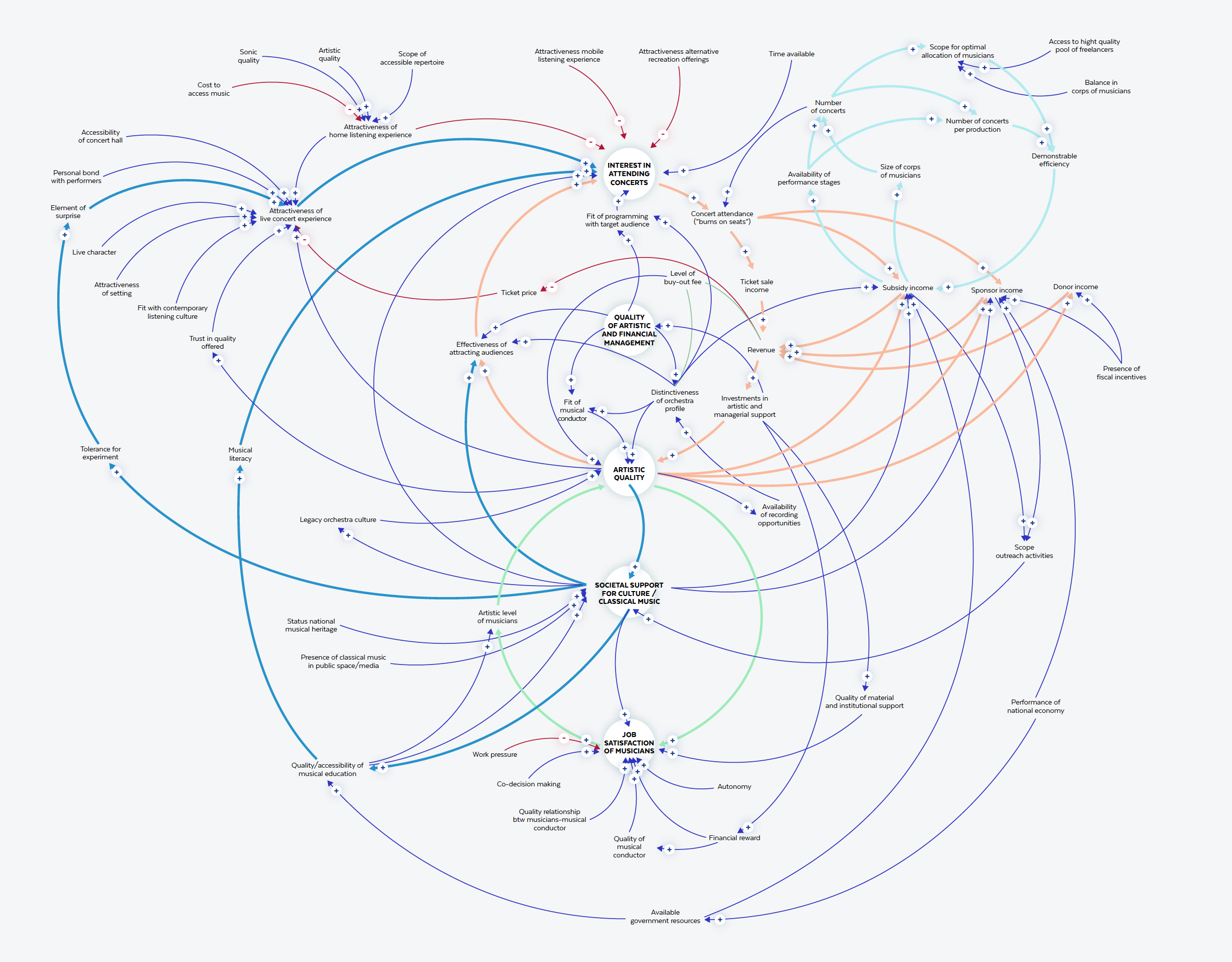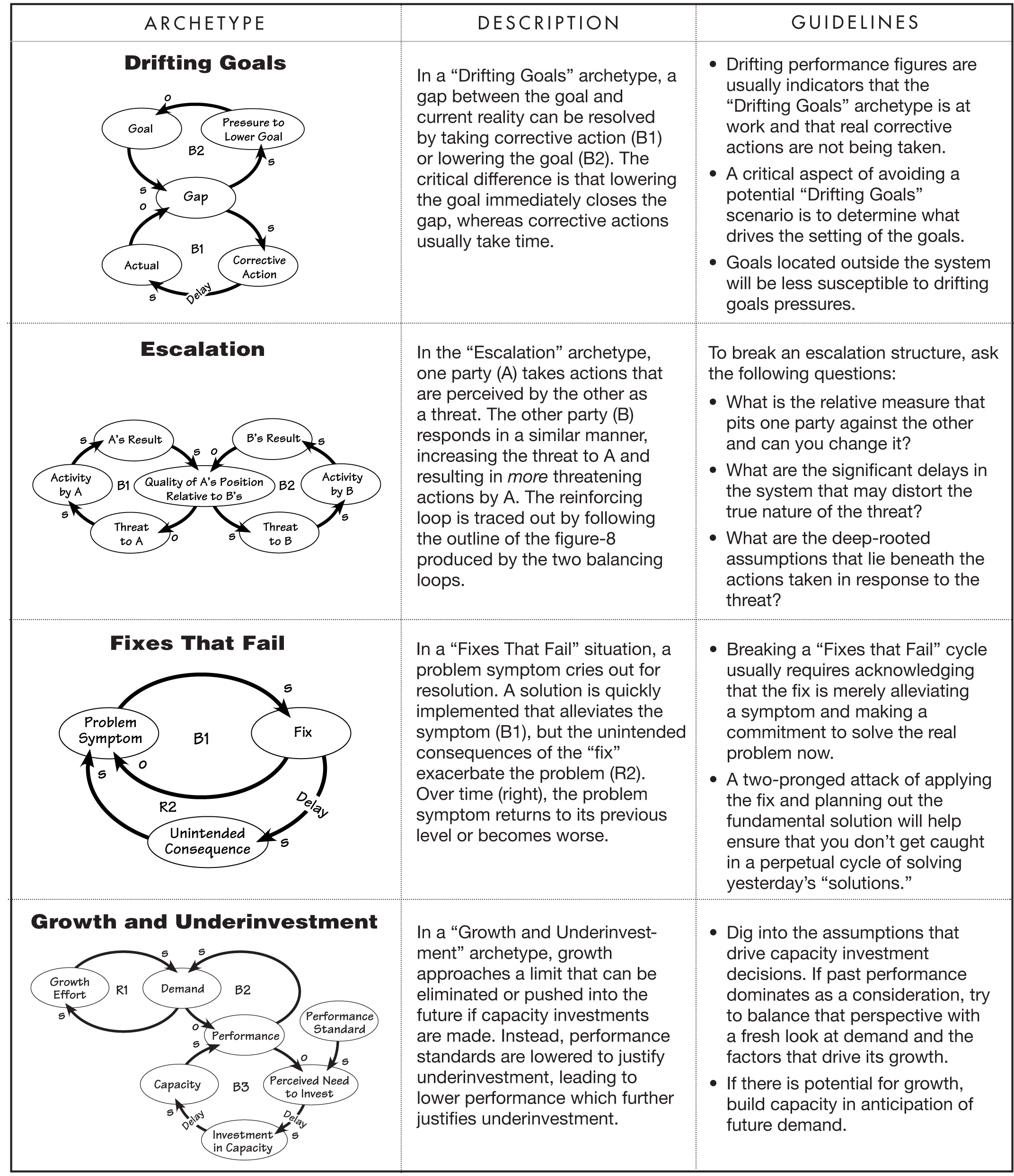When it comes to complexity, show works better than tell
October 22, 2021•1,196 words
The sketchnote collection article I posted yesterday seemed to attract a lot of kudos from friends and contacts far and wide, equally reminding them of good past memories we all cherished. It seemed like this post was long overdue, but it's nice to give it a new lease of life out on active channels.
It's been awhile since I've shared or posted anything related to Systems Thinking (on any channel, let alone this one).
Today, I came across a fantastic case study article from Philippe Vandenbroeck about his work with Koen Vandyck regarding their analysis of state funded orchestras in Belgium, informed by and constituted through a large causal loop diagram (CLD).

The author speaks practically about how to read the CLD map, which provides a starting point for casual, new readers.
How to read this map? The map consists of factors that are causally linked. An upstream factor drives downstream factors. All the factors included in the map have been conceptualised as ‘variables’. That means that they can go up or down, and by doing so will have an effect on the downstream variables. The blue arrows indicate that an increase of a tail variable (say, ‘ticket sale income’) will lead to an increase of the head variable (‘revenue’; vice versa in case of a decrease). The red arrows indicate that the relationship is the reverse, meaning that an increase of tail variable will lead to a decrease of the head variable and vice versa (an increase in ‘ticket price’ leads to a decrease in the ‘attractiveness of live concert experience’).
Then, he starts to unpack the main insights from his analysis, the various "gravities" of systems phenomena, narrating the various "shapes" of the system through his systems literacy — e.g. upstream and downstream forces — while explaining the broader story, one critical systems loop after another, in an attempt to help the reader relate systems phenomena back to the challenges and significance in reality.
The central variable is ‘artistic quality’. There is a broad consensus that this determines the viability and fundability of any artistic project. It reflects the level at which an individual artist, project or organisation excels in its genre, organisational form or function.
The system map underlines that as far as an orchestra is concerned artistic quality is not the only determinant of success. It is a crucial element, but cannot be seen separately from at least four other key factors:
- the public’s interest in attending concerts,
- the societal support for classical music,
- the orchestra musicians’ job satisfaction, and
- the quality of the artistic and business management.
As a whole, the system map is therefore built around five key factors — artistic quality supplemented by the four factors just mentioned.
CLDs are seldom self-evident - especially the larger ones. CLD maps are there to reveal, through its formal structure and syntax, the underlying patterns of causal loops in an abstract way—it's then left to people who have the tacit and deep knowledge of the real-world to translate that systems understanding to the real-world significance behind what these patterns mean.
CLDs are not like some other, more accessible frameworks like service blueprints and business model canvases, which contain in their formal syntax, elements that map directly to the assumed elements of the real world — i.e. users, front office, back office, activities, customer relationships, partners...
CLDs have NONE of those things — it is agnostic to real-world elements. Instead, it focuses on expressing the nature of causal feedback loops, and work alongside system feedback axioms (also known as system archetypes) which, almost like physics, map to patterns of behaviour over time.

These patterns act as heuristics for systems practitioners to understand how things might potentially unfold over time given certain causal assumptions and relationships between inter-related things happening in reality.
Despite the strategic value that causal loop diagrams offer practitioners, it remains somewhat of an underutilised tool in the strategy space. One one hand, it's one of the more accessible and common tools that systems practitioners use to do strategic systems work... but the rest of the world doesn't really pay much attention to it.
I suspect it has less traction compared to tools like, I'm probably making this up, complex user journeys, service ecosystem maps or blueprints, theory of change models,... perhaps even Wardley maps and the Cynefin framework? And it's probably because CLDs don't have that mapping to elements in the real world. It requires someone to be literate in basic systems syntax and language to read and understand a CLD.
This is why I wish there were more practical, applied case studies like this one using systems thinking approaches. More of this and not just talk about the value of systems thinking. Show, don't tell.
This way, more people can cross the proverbial bridge between systems and the real world, and realise that in the end that the world of systems and reality itself have never actually been disconnected from each other in the first place... only just in our conception and understanding of it.
Interestingly, the author lamented on the reluctance of orchestras themselves to engage in meaningful conversations after the report was released and socialised, despite very positive feedback from the project sponsors and subject matter experts.
Reactions to our study were mixed. Our government sponsor was very pleased and hailed the report as a landmark study. We also received kudos from insiders who know the sector well. However, the orchestras themselves campaigned vigorously against the insights from our report. They refused to enter into nuanced debate about it. For Koen and myself, both staunch supporters of the institution, this was a disappointment. The reaction seemed to betray a false sense of entitlement and union-led intransigence. As far as we are concerned, the gravest threat to a viable future for the symphony orchestra is not a changing world, but the strategic myopia of what risks to become a cultural dinosaur.
The designer in me made me think the "people-centered practice" part is where systems thinking efforts can sometimes fail despite well intentions, although I'm not suggesting that this was what happened to Philippe and Koen.
For things to change at a large scale, lots of different people need to be involved, and people within the system need to have appropriate ownership and involvement in the change process for that whole organic process to move forward in a meaningful way. The profound understanding and insights that systems practice only represents a small portion of the actual thing that needs to change—people. Lots and lots of people.
But this is what excites me about the work I get to do, drawing from the profound practices and progressive communities of practitioners out there trying to make long-lasting impact and contribution in the world. There's so much opportunity ahead of us to mix and blend our different tools and domains together, cross each other's bridges, and learn from each other's expertise. And work with each other to change ourselves, and the world, one step at a time.